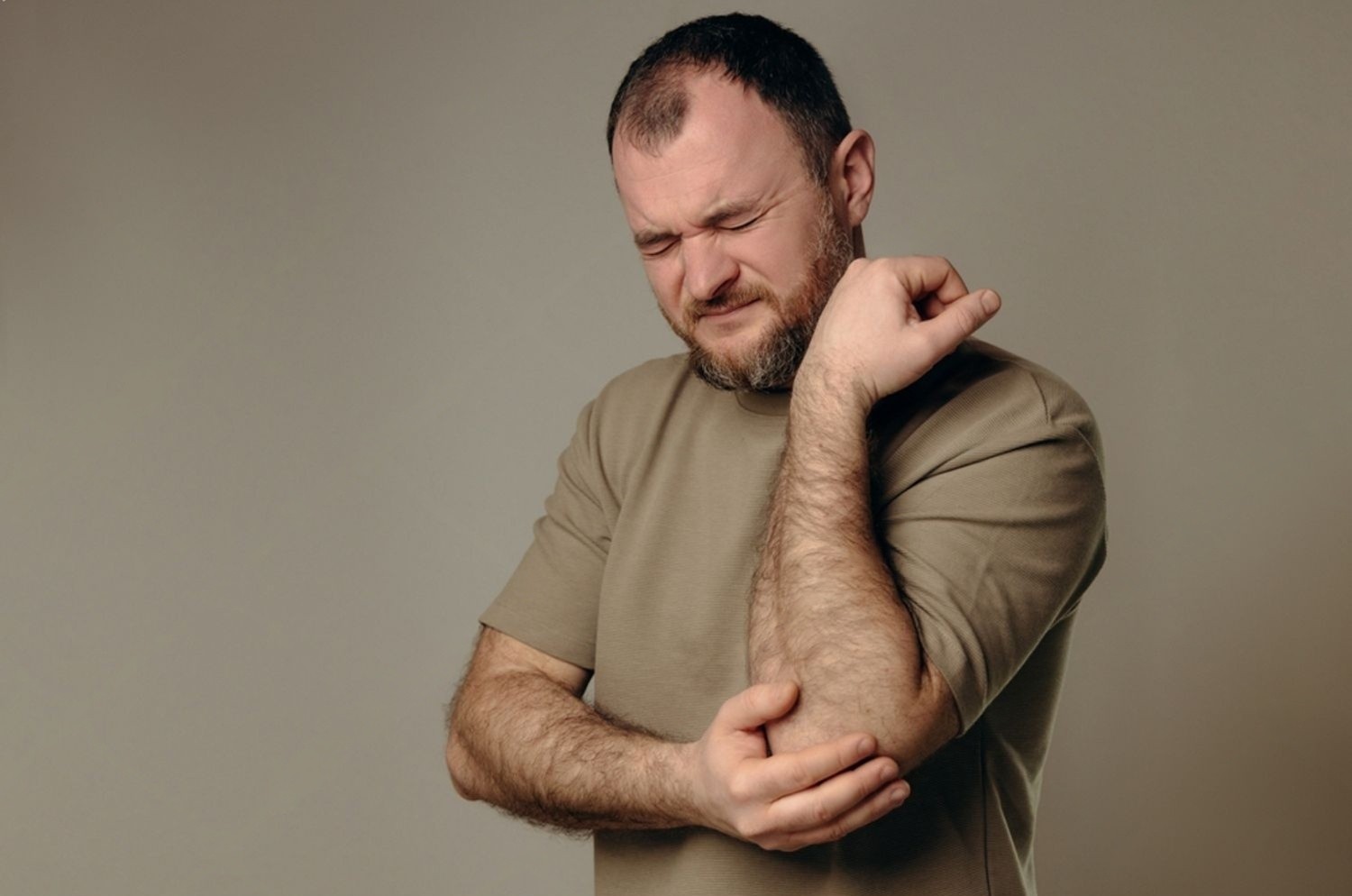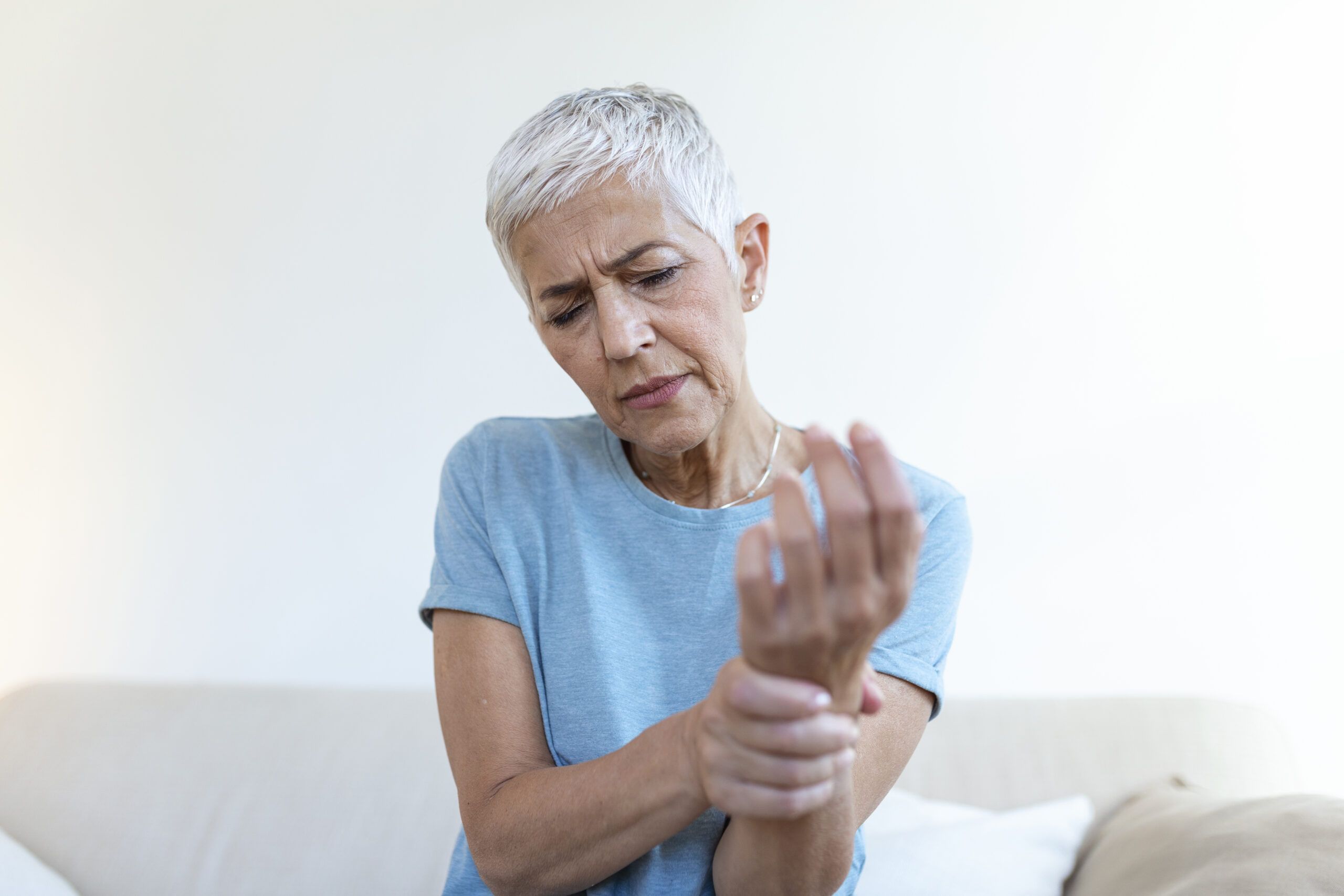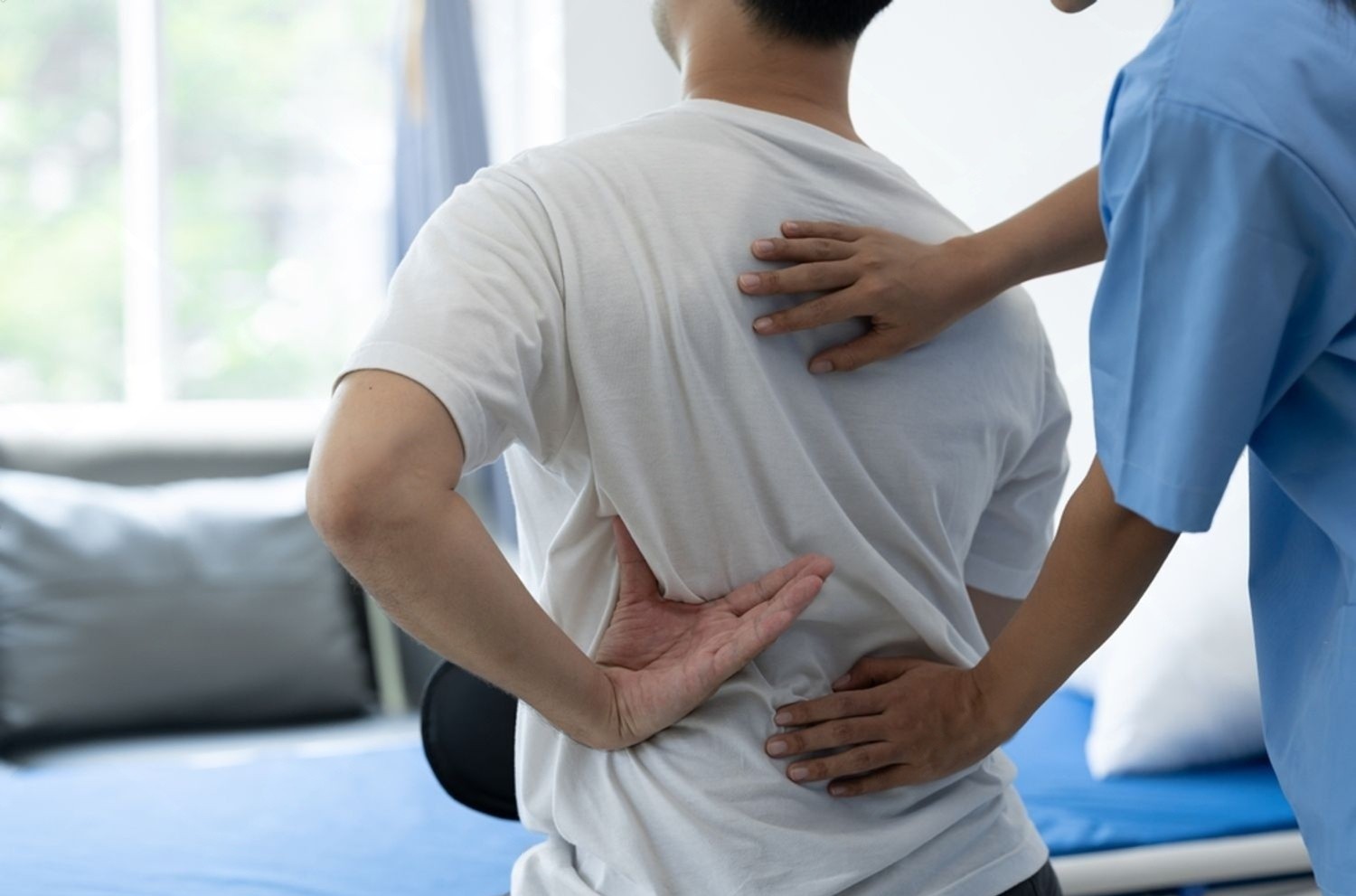Can a Chiropractor Fix Tennis Elbow?

Yes, a licensed chiropractor can treat tennis elbow symptoms through non-invasive methods like spinal adjustments and manual therapy. Tennis elbow, also known as lateral Epicondylitis, is a condition where the tiny bump at the outer side of your elbow becomes painful and tender. While the pain is localized at the elbow, over time, it can spread down the forearm towards the wrist, making daily activities uncomfortable. Some struggle with lifting objects or workouts, while others face challenges at work because of pain flaring up after typing for too long. Chiropractic treatments restore the normal mechanics of the affected joints and soft tissues, reducing stress on the elbow and improving its function. This blog uncovers what tennis elbow exactly is, its underlying causes, common symptoms and how a chiropractor can fix it.
Let’s begin.
What is Tennis Elbow/Lateral Epicondylitis?
To understand tennis elbow (lateral epicondylitis), let’s first take a look at our elbow joint’s anatomy.
Think of the elbow joint like a hinge door plus a swivel joint all in one, allowing you to bend your arm or rotate your forearm as you would need to turn your palm up or down.
|
Component |
What it does |
| The three main bones that make up the elbow joint | – Humerus: the upper-arm bone – Ulna: the inner forearm bone (on pinky side) – Radius: the outer forearm bone (on thumb side) These bones form the “framework” of the elbow. |
| Hinge Joint (Humeroulnar joint) | Like a door hinge, it’s what lets your arm bend (flex) and straighten (extend). |
| Other Joints (Humeroradial + Proximal Radioulnar) | So you can twist your hand, like turning a doorknob or pouring water from a jug. |
| Cartilage & Joint Surfaces | Acts like Teflon or a smooth pad between the bones so they glide, not grind. |
| Ligaments | – Ulnar collateral ligament (inside of elbow) – Lateral collateral / radial collateral ligament (outside of elbow) – Annular ligament (wraps around the radius). These keep everything from wobbling out of place when you move. |
| Muscles & Tendons | – Flexor muscles (attach on the inner side of the elbow) — let you bend your wrist/fingers – Extensor muscles (attach on the outer side) — let you straighten your wrist/fingers. Tendons anchor these muscles to bone. For tennis elbow, the extensor tendons at the outer elbow often become overworked or injured. |
| Joint Capsule & Synovium / Synovial Fluid | Think of this like a sealed bag of oil that keeps all the moving parts smooth and protected. |
How Does This Relate to Tennis Elbow?
Tennis elbow involves a large group of extensor muscles in your forearm. These muscles are attached to the bump on the outside of your elbow (Lateral Epicondyle) via tendons. When these extensor muscles are overused due to repetitive movements of the forearm, the tendons are also tugged at the lateral epicondyle or the bony bump on the outer part of your elbow. Repeated use of the extensor muscles can cause tears in the tendon, leading to inflammation. These microscopic tendon tears and inflammation cause pain on the outside of the elbow, which is the main characteristic of tennis elbow.
What Can Cause Tennis Elbow?
Here is the list of common causes:
- Repetitive gripping or wrist movements
- Overuse in sports, especially racket sports like tennis
- Manual labour jobs that use repetitive wrist and arm motions.
- Prolonged computer or desk work
- Carrying or lifting heavy objects
- Sudden strain or injury
- Age-related wear and tear
Identifying the exact cause is the fundamental part of tennis elbow treatment. It determines whether a holistic approach like chiropractic care is applicable or not. Industries like manufacturing, health care or construction involve repetitive use of the wrist, grip and elbow and hence are prone to this condition. The Ontario workers’ compensation data shows epicondylitis is one of the musculoskeletal injury claims, meaning people in many manual and repetitive motion jobs are getting it.
How do Tennis Elbow Symptoms Feel Like?
Sharp or burning pain on the outside of the elbow – especially when pressing on the bony bump (the lateral epicondyle).
Pain that worsens with gripping – holding a coffee mug, shaking hands, or turning a doorknob can trigger discomfort.
Radiating ache down the forearm – the pain often spreads from the elbow toward the wrist, making everyday movements tiring.
Weakened grip strength – simple tasks like lifting a kettle, carrying grocery bags, or opening jars can feel surprisingly difficult.
Stiffness in the morning – some people wake up with a dull ache or a “tight” feeling around the elbow.
Tennis elbow feels like a mix of pain, weakness and irritation that limits your potential and everyday hand & arm use. It is not just an athlete’s problem. Anyone who repeats the same motion every day for long periods of time with their arms is prone to this condition.
What Can a Chiropractor Do For Tennis Elbow?
Chiropractors are licensed healthcare professionals with expertise in managing and preventing neuromuscular disorders. For tennis elbow pain relief, chiropractors in Canada adopt a multimodal approach where they incorporate adjustments to the spine and localized therapy at the elbow to restore the normal health and function of the elbow joint. Consistent chiropractic sessions address the root causes of tennis elbow symptoms, relieving the pain from its core rather than masking the symptoms temporarily. This also explains why chiropractic care provides lasting relief for chronic cases where other treatments fail.
Effective Chiropractic Treatments for Tennis Elbow
Chiropractic care is based on the kinetic chain principle that the body functions as an integrated system of linked segments. Thus, dysfunction or biomechanical fault in one area can lead to compensatory stress and injury in another.
This is also applicable to tennis elbow.
The nerves that control the forearm extensor muscles and provide sensation to the entire arm originate from the nerve roots of the cervical spine (the neck). From a chiropractic point of view, joint misalignments in the neck can irritate the nerve roots of extensor muscles, potentially leading to weakness in the arms and injury to the elbow tendons. Chiropractors also believe that biomechanical dysfunction in the upper back can contribute to overuse of forearm muscles, which leads to tennis elbow.
Thus, chiropractic treatments focus on three crucial factors to relieve tennis elbow pain:
- Restore normal joint mechanics in the neck, shoulder girdle and arms
- Reduce pain and inflammation in the elbow and forearm
- Strengthen muscles around the elbow to prevent further pain
Now let’s check out the methods for lateral epicondylitis treatment.
Joint Manipulation & Mobilization
For tennis elbow patients, chiropractors use their primary technique, joint adjustment, to relieve pain and restore mobility. They apply a high-velocity, low-force adjustment at restricted segments in the cervical and thoracic spine. This restores normal joint mechanics in the spine, improving nerve function to the arm, reducing muscle tension in the neck and correcting postural imbalances that contribute to tennis elbow.
Chiropractors also apply adjustments directly to the affected joints of the arm. This forearm adjustment is effective for tennis elbow since it can reduce pain and improve grip strength. The goal of this method is to reduce mechanical stress on the extensor tendons and enable pain-free movement of the elbow and wrist.
Soft Tissue Therapies
When you have tennis elbow, it’s not just about surface pain. The real problem lies deeper in the muscles, tendons, and fascia (the connective tissue that surrounds and supports them). So, chiropractors use soft tissue therapies to restore normal tissue health and function. Here are the common soft tissue therapies for tennis elbow:
Active Release Technique (ART)
Chiropractors may use active release therapy for tennis elbow to break down scar tissue and improve muscle flexibility. They apply specific, deep tension to the affected tissue while guiding the patient through a precise movement to lengthen the muscle. This combined action helps release restrictions and restore normal muscle function.
Graston Technique
The Graston technique for elbow pain relief involves the use of specialized instruments to gently scrape and mobilize tissues, reducing adhesions. The chiropractor moves the instruments over the skin to apply a controlled microtrauma to the affected area. This triggers a local inflammatory healing response, which promotes the natural healing of the affected tissues.
Trigger Point Therapy
In some cases, the professional may use trigger point therapy to release small, tight muscle knots in the forearm muscles. These knots can cause pain right where they are or even refer pain to nearby areas, like from your forearm up to your elbow. It is a hands-on technique where a chiropractor or therapist applies focused pressure to these knots to release them and bring you relief.
Cross-Friction Massage
The purpose of massage therapy is to break down scar tissue, increase local blood circulation and create a therapeutic movement of the tendon fibres. The chiro applies firm pressure across the injured tendon fibres at a right angle. This motion creates a “micro-movement” within the tendon that helps the tissue heal in a more organized way.
Therapeutic Exercises
Active rehabilitation is a vital component of long-term recovery from tennis elbow. This is where the role of therapeutic exercises comes into play. Chiropractors guide you through strengthening, stretching and grip strengthening exercises focusing on progressively tendons to stimulate adaptation and healing. Typical exercise prescriptions involve performing 3 sets of 10-15 repetitions daily. Patients generally start with strengthening exercise, which initiates the healing of the injured tendon. Stretching exercises of the wrist extensor and flexor muscles improve muscle flexibility and reduce muscle tension. You may be prescribed grip strengthening exercises once the acute pain has subsided.
These are the most effective natural treatments for tennis elbow chiropractors use. The type of treatments prescribed to you depends on the root cause of your pain and the intensity of the symptoms. Chiropractors assess the patient’s symptoms thoroughly to determine the most effective combination of treatments for long-term recovery.
What to Expect from Your First Chiropractic Session for Tennis Elbow?
Chiropractic treatment for tennis elbow is not a one-size-fits-all protocol. Rather, it is tailored to the individual patient’s specific needs and health goals. Here’s what a typical chiropractic session looks like when you visit for tennis elbow.
Comprehensive Assessment
The first step toward effective treatment is a thorough assessment. During your initial chiropractic visit, the chiropractor takes time to understand the full picture of your pain — not just your elbow.
What does the Assessment include?
Health History
- When and how the pain started
- Activities that make it worse (work tasks, hobbies, sports)
- Overall lifestyle factors
Postural & Functional Analysis
- Checking posture for imbalances that may strain your arm
- Assessing movement in the neck, upper back, shoulder, elbow, and wrist
- Looking for muscle tightness, joint stiffness, or fascial restrictions
Neurological Examination
- Checking reflexes, sensation, and muscle strength
- Ruling out conditions like nerve entrapments or cervical spine issues that may mimic elbow pain
This comprehensive evaluation helps the chiropractor identify not just the irritated tendon, but also the underlying biomechanical faults like poor posture, restricted joints, or weak muscles. This helps them address the whole body beyond the symptom, making the treatment effective, long-lasting, and tailored to your unique needs.
Diagnosis
The clinical diagnosis of tennis elbow depends on the patient’s medical history and a focused physical examination. Patients usually report pain in the outer part of the elbow. The pain may come off as a burning sensation or a persistent ache.
The physical examination is crucial to confirm the diagnosis. The chiropractor uses palpation to look for point tenderness on the lateral epicondyle.
They may use certain orthopedic tests to mimic the patient’s pain, such as Cozen’s test or Mills’ Test. These tests place specific stress on the common extensor tendon, the result of which can indicate the real problem.
Initial diagnosis usually doesn’t involve diagnostic imaging. Advanced imaging modalities like ultrasound can visualize the tendon and show the tears or specific changes.
A Typical Treatment Process
This step is where the chiropractor provides you with a comprehensive treatment plan tailored to your needs. They explain the process, its benefits and start executing the plan once you are comfortable and ready.
Note: This is just an example of what a typical treatment process may look like. The treatment plan is unique to every individual, based on their medical history, severity of symptoms and health goals.
Phase 1: Pain Relief (Weeks 1–2)
Goal: Calm down irritation and reduce pain
Gentle manual therapies (joint mobilizations, light soft tissue therapy)
Advice on avoiding aggravating movements
Use of ice or laser therapy to manage inflammation
A counterforce brace may be recommended during certain activities
Phase 2: Repair & Restore (Weeks 2–6)
Goal: Support tissue healing and restore normal function
More targeted therapies like IASTM (Instrument-Assisted Soft Tissue Mobilization) or ART® (Active Release Technique)
Gentle stretching to improve flexibility
Gradual introduction of strengthening
Isometric (holding contractions)
Light concentric (muscle shortening) exercises
Phase 3: Strength & Prevention (6+ Weeks)
Goal: Build resilience and prevent recurrence
Focus on strengthening exercises (lengthening contractions) to repair and strengthen the tendon
Gradual increase in intensity and exercise volume
Guidance on:
- Correct sport techniques (e.g., tennis backhand mechanics)
- Workplace ergonomics to reduce daily strain
It doesn’t take over 6 weeks for every patient with tennis elbow to feel better at chiropractic clinics. Recovery from tennis elbow is highly individual. Some may find relief sooner, while a few may take longer.
Is Chiropractic Adjustment Good for Tennis Elbow?
According to a recent meta-analysis, eccentric exercises can significantly reduce pain and improve muscle strength in patients with tennis elbow. RCTs (Randomized Controlled Trials) have shown that mobilization and manipulation of the wrist and elbow can provide short-term pain relief and improvements in grip strength. One clinical trial found that patients who received wrist manipulation experienced better results at both 3 and 6 weeks compared to those who followed a traditional treatment plan of ultrasound, friction massage, and exercises.
Another study showed that when Instrument-Assisted Soft Tissue Mobilization (IASTM) was combined with exercise, outcomes were significantly better than exercise alone. Impressively, 78% of patients reported full resolution of their symptoms after just two months.
The effectiveness of chiropractic care on tennis elbow depends on the root cause and the patient’s medical status. The chiropractor recommends the treatment if it’s applicable to you based on your diagnosis and test results. If you are in Brampton and experiencing tennis elbow symptoms, consult with a licensed chiropractor at Physiotherapy First to know the right treatment for yourself.
Blog Categories
- Acupuncture Treatment (10)
- Ankle Sprain (1)
- Arthritis Treatment (1)
- Back Pain (23)
- Chiropractic Care (38)
- Tennis Elbow (1)
- Chronic Pain (5)
- COVID-19 (1)
- Custom Orthotics (6)
- Dizziness (4)
- Exercises (12)
- Foot Orthotics (6)
- Hamstring Stretches (2)
- Info Articles (3)
- Kids Injury (1)
- Laser Therapy (4)
- Massage Therapy (21)
- Neck Pain (16)
- Orthopedic (1)
- Osteoarthritis (5)
- Osteopathy (3)
- Pain Management (17)
- Physiotherapy Benefits (44)
- Physiotherapy Clinic (6)
- Physiotherapy Exercises (12)
- Physiotherapy Tips (25)
- Physiotherapy Treatment (100)
- Rotator Cuff (2)
- Shin Splints (1)
- Shoulder (2)
- Spine (4)
- Sports Physiotherapy (1)
- Uncategorized (1)
- Vestibular Physiotherapy (2)
- Work From Home (2)


